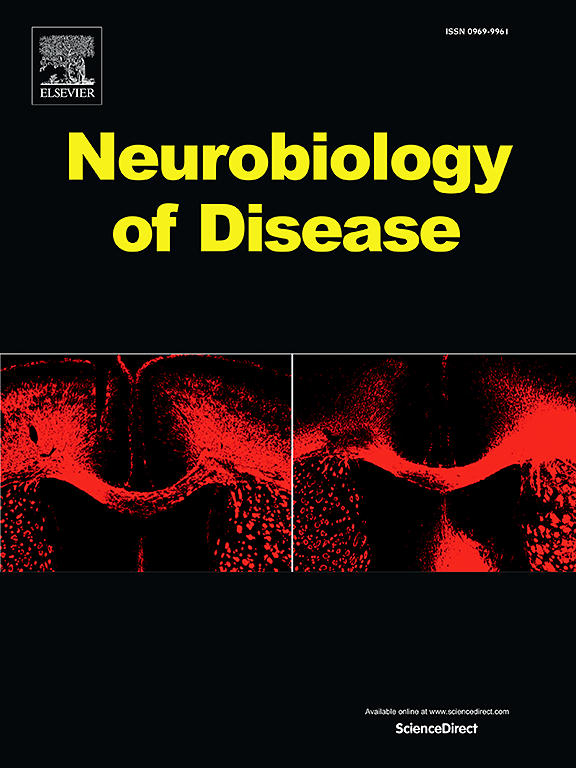原发体感觉皮层局灶性损伤后完整半球的皮质图重塑和功能恢复。
IF 5.6
2区 医学
Q1 NEUROSCIENCES
引用次数: 0
摘要
初级体感觉皮层(S1)损伤后,大多数研究都集中在病灶周围重塑及其在功能恢复中的作用。相比之下,对侧皮层的改变仍然知之甚少,即使半球间通讯被病变破坏。采用电生理作图的方法,研究了大鼠前爪S1区单侧局灶性损伤后完整半球皮肤图重构的时间过程,并对感觉运动缺陷进行了行为评估。皮层图显示了一个代表性的去分化诱导躯体组织退化,在损伤后立即开始,并在损伤后第14天结束时恶化。这些变化的基础是皮肤感受野的急剧扩大,并伴有神经元敏感性的增加。损伤半球对侧前爪的触觉敏感性和感觉运动调节功能明显受损,从第2周到第7周逐渐减弱。有趣的是,在“非麻痹”的前爪中也观察到精细感觉运动调节的缺陷。与“麻痹”肢体相比,它们不那么明显,但随着相似的时间恢复过程而进化。随着功能的恢复,躯体组织的实质性恢复逐渐发生。损伤后的即时效应表明了半球间相互作用的改变,并强调了半球交叉影响在维持每个半球皮肤图的精细体位组织中的关键作用。完整皮质S1图谱的归一化与功能恢复可能反映了代偿机制重组半球间通讯和形成皮层神经元的反应。本文章由计算机程序翻译,如有差异,请以英文原文为准。
Cortical map remodeling in the intact hemisphere and functional recovery after focal lesion to the primary somatosensory cortex
After injury to the primary somatosensory cortex (S1), most studies have focused on perilesional remodeling and its role in functional recovery. In contrast, alterations within the contralesional cortex remain poorly understood, even though the interhemispheric communication is disrupted by the lesion. Using electrophysiological mapping, we investigated in rats the time-course of cutaneous map remodeling in the intact hemisphere following unilateral focal damage to the forepaw area in S1 along with behavioral assessment of sensorimotor deficits. Cortical maps showed a representational dedifferentiation inducing a degradation of the somatotopic organization, starting immediately after the lesion and worsening until the end of the 14th day post-injury. These changes were underpinned by a dramatic enlargement of cutaneous receptive fields accompanied by an increase in neuronal sensitivity. Strong impairment of tactile sensitivity and sensorimotor adjustments was shown for the forepaw contralateral to the injured hemisphere, that gradually abated from the 2nd to the 7th week. Interestingly, deficits of fine sensorimotor adjustments were also observed in the “non-paretic” forepaw. They were less pronounced than in the “paretic” limb but evolved with a similar time course of recovery. A substantial restoration of somatotopic organization occurred gradually, in parallel with the functional recovery. Immediate post-lesion effects suggest an altered interhemispheric interplay and highlight the critical role of hemispheric cross influences in maintaining fine somatotopic organization of cutaneous maps in each hemisphere. S1 map normalization in intact cortex paralleling functional recovery may reflect compensatory mechanisms reorganizing interhemispheric communication and shaping cortical neurons' responses.
求助全文
通过发布文献求助,成功后即可免费获取论文全文。
去求助
来源期刊

Neurobiology of Disease
医学-神经科学
CiteScore
11.20
自引率
3.30%
发文量
270
审稿时长
76 days
期刊介绍:
Neurobiology of Disease is a major international journal at the interface between basic and clinical neuroscience. The journal provides a forum for the publication of top quality research papers on: molecular and cellular definitions of disease mechanisms, the neural systems and underpinning behavioral disorders, the genetics of inherited neurological and psychiatric diseases, nervous system aging, and findings relevant to the development of new therapies.
 求助内容:
求助内容: 应助结果提醒方式:
应助结果提醒方式:


